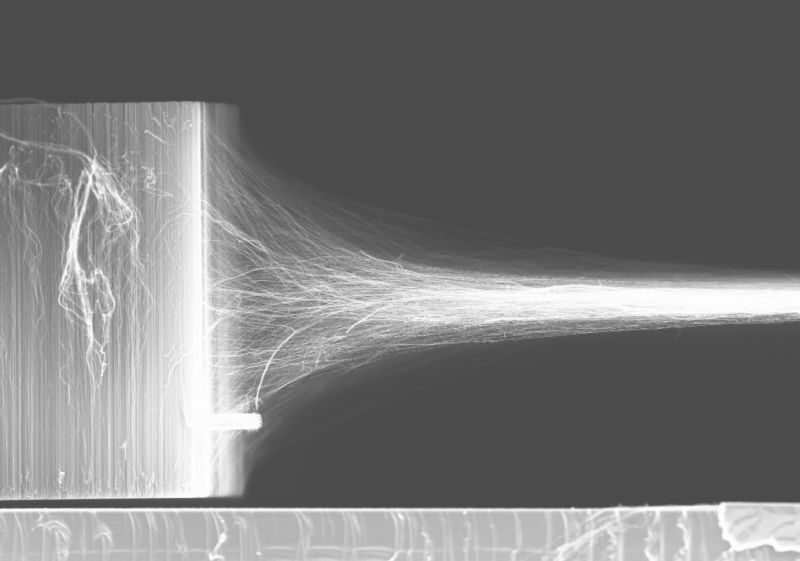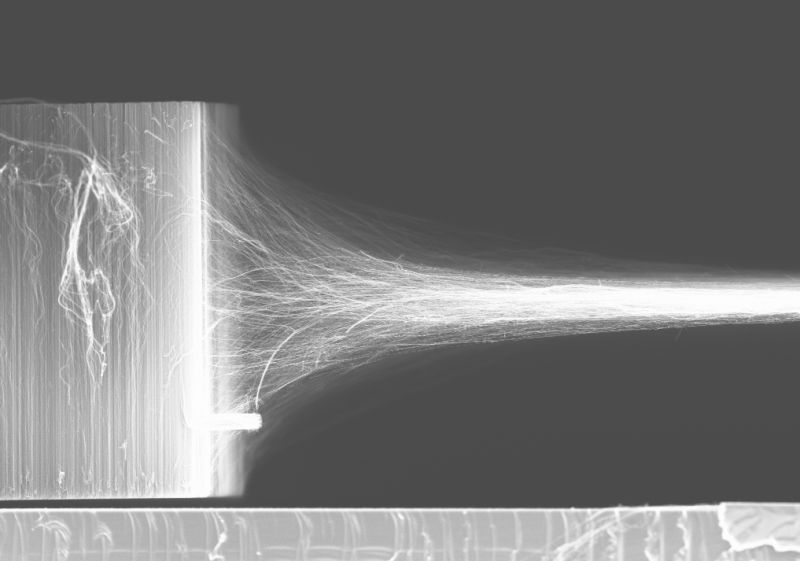One of the latest developments in the field of alternative energy generation is electricity generation with the help of carbon nanotube yarns. The hi-tech yarns, also known as ‘twistrons’, produce electricity which can power wearable health devices and smart clothes. These yarns could be used in many applications in the future, including harvesting electricity from ocean wave motion and even from fluctuations in temperature. This fascinating development is another way to generate electricity in an eco friendly green way.
How it’s made

Image Source : nisenet.org
Carbon nanotubes are composed of pure carbon. They are extremely strong, and can conduct electricity and heat. They are resistant to degradation caused by radiation. Carbon yarns are made from carbon nanotubes. These are basically hollow cylinders made from carbon which have a diameter 10,000 times smaller than human hair. The scientists twist the carbon nanotubes to form lightweight, high in strength yarns. The researchers twist the nanotubes to an extreme point, which results in the yarn being extremely flexible and elastic, just like a rubber band.
How it works
The yarns produce electricity when they are coated with or submerged in an electrolyte or an ionic conducting material, which could be a simple mixture of water and salt. According to one of the lead researchers, the yarns are fundamentally supercapacitors. Once the yarn or twistron energy harvester is stretched, it generates electricity. This is because when the yarn is stretched or twisted, the yarn’s volume decreases, which brings the electric charges close together, thus increasing the energy.
A normal capacitor is charged by an external energy source, such as a battery, but in the case of carbon nanotube yarns, the yarns can be charged directly by submerging it into an electrolyte. There is no need for an external battery to charge it. The increased voltage associated to the yarn enables electricity to be harvested. The twistrons yarns are stretched 30 times per second, yielding 250 watts per kg of electricity when normalized.
Scientists displayed a yarn whose weight was less than that of housefly, which could light up an LED. The small LED light lit up every time the researchers stretched the yarn.
The twistron yarns could also harvest excess thermal energy from the surrounding environment. This was proven by connecting a carbon nanotube yarn to an artificial muscle made of polymer, which could expand and contract, on heating or cooling. Thus, the twistron harvester could convert the mechanical energy (contraction and expansion) of the artificial muscle into electrical energy.
Uses of electricity generated by carbon nanotube yarns
 Image Source : nisenet.org
Image Source : nisenet.org
Scientists are excited about this new development as it has the potential to reduce the use of lead batteries. There are many ways in which this technology can be put to use.
Due to the capacity of the yarns to convert mechanical energy into electrical energy, they can be used as self-powering breathing monitors, when they are sewn into smart clothes.
Carbon nanotube yarns can use waste energy to power many IOT (Internet of Things) devices, such as distributed sensors. Twistron tech can be used for applications in which changing batteries might be impractical.
In one experiment, researchers wove the yarn into a shirt, and the yarns produced electricity using the respiration of the wearer. As it can function with the help of both liquid and solid electrolytes, the uses can be numerous.
For example, to operate the devices such as wireless transreceivers, which require less power, and which have to send out one burst every couple of minutes, the tiny amount of electricity generated by the twistron is enough.
This yarn could also be used for harvesting electricity from the ocean by converting the motion of the waves into electrical energy. The salty water of the ocean acted as the electrolyte. This could prove to be an alternative form of energy generation, provided it could be scaled successfully, in an economically viable way. Enormous amounts of electricity can be harvested from the ocean waves using this technology.
Carbon nanotubes can be used in electrical sensors, LEDs, synthetic muscles, smart clothing, satellite tethers, and even to charge iPods using the energy of the morning sun. Though this technology has a lot of potential, it will be some time before it is used commercially, due to the technical difficulties of producing the yarn and the heavy expense involved.




